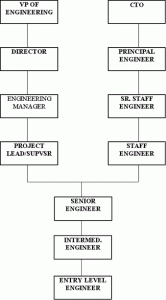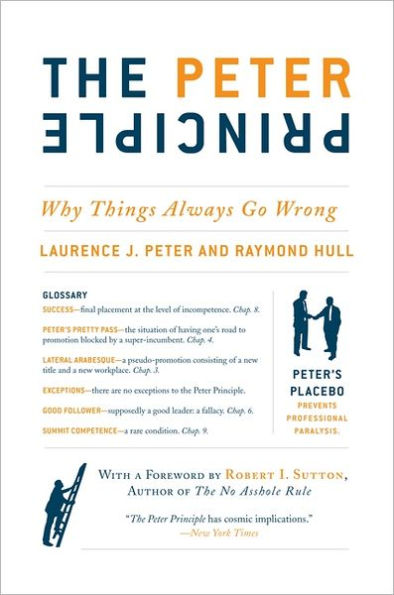|
|
|
Archive for September, 2018
Friday, September 28th, 2018

A Friday series exploring Startups and the people who make them go. Read all If the Shoe Fits posts here.
Most people don’t think of founders as being bosses, including themselves, but, of course, they are.
And as bosses they are responsible for the success of their team, as well as the company.
As well as being a boss, the vision that is the basis of the company originated with them, which frequently leads them to one or more of the behaviors that make them what Wally calls a “bossy boss.”
“Boss” has gotten a bad rap. Many people associate that term with a domineering, order-giving jerk. I think they’re confusing the term “boss” (a person responsible for the performance of a group) with “bossy.”
The Cambridge Dictionary says that: “A bossy person is always telling people what to do.” Great bosses lead productive teams with great morale. Great bosses aren’t bossy at all. They know three important things.
Being Bossy Is Crazy-Making
If you tell everybody what to do, all the time and everywhere, you’re going to wear yourself out. Great bosses know that caring for their people includes helping them develop their skills, abilities, and decision-making. They can’t do that if you’re always telling them what to do. But, if you can stand back and absorb the mistakes that go with learning, people on your team will take a lot of work right off your shoulders.
What’s the alternative? You make yourself crazy trying to do everything and know everything. Morale plummets, and so does productivity.
You Don’t Have Control Anyway
Nobody tells new managers this important truth. When you become responsible for the performance of a group, your power goes down, not up. Oh, sure, you can punish people who don’t do what you want with whatever means your organization will allow.
That’s more like revenge than like power. And, if a team member is willing to absorb the punishment, their behavior simply won’t change. Productivity and morale will plummet.
The only thing you can control is your behavior: what you say and what you do. That doesn’t seem like much, but it’s enough. Use what you say to set clear expectations and to coach, counsel, and encourage. Use what you do to reinforce what you say and set the example.
Edward Deci and Richard Ryan defined “autonomy” as one of the three key drivers of intrinsic motivation. David Burkus reviewed studies of how people respond to increased or decreased control of their life in his great book, Under New Management. He summarized them this way:
“The researchers found a significant correlation between employees’ perceptions of autonomy and their overall performance. In short, the more managers cede control over what to do and how to do it, the more employees do it well.”
People Work Better When They Have Control
Edward Deci and Richard Ryan defined “autonomy” as one of the three key drivers of intrinsic motivation. David Burkus reviewed studies of how people respond to increased or decreased control of their life in his great book, Under New Management. He summarized them this way:
“The researchers found a significant correlation between employees’ perceptions of autonomy and their overall performance. In short, the more managers cede control over what to do and how to do it, the more employees do it well.”
Bottom Line
The best bosses aren’t bossy. They know that being bossy makes them crazy, that they don’t really have control anyway, and that most people work better when they control their work.
Copyright © 2018 Wally Bock, All rights reserved.
Image credit: HikingArtist
Posted in If the Shoe Fits, Personal Growth, Retention | No Comments »
Thursday, September 27th, 2018

If you have been following then you saw I took on a new role recently. So far the role has been great and very fulfilling. I have begun diving into what my role is, have started taking ownership and also learning the quirks of my co-workers.
Something that is quite new to me is the fact that I no longer have an office and am in a more open office floor plan setting. It has made me think about how do I like to work and interact with others?
A couple of positive points about working in a more open setting. You always have someone to talk to, it enables easy collaboration and quick huddles with your team to address a challenge.
I also like to hear my colleagues on the phone (we do inside sales), not to listen in, but to get a sense for what best practices look like when I hear them. I have also found that I tend to be a bit more focused on my work when others are around. I can pop on my headphones, listen to music and get into the flow.
There are some definite downsides to an open plan. No privacy. I don’t have a ton of personal calls during the day, but it does happen I have to go out to the elevator bank or a conference room to speak.
Instant collaboration…about fantasy football. Quick way to get out of the flow. And for every best practices call there are a ton where you want to smack your head for hearing something so dumb being said.
And if your headphones are missing then I hope you can grind through and block out the conversations around you.
I don’t have an answer on what is better for an office space, but I do appreciate that my company has break rooms, conference rooms and quiet areas to take calls or work if needed. I can go lounge on a couch if I want and do some work, no one is going to say anything.
So in the end I am satisfied. I get to enjoy my work, go to our onsite gym and drink unlimited amounts of La Croix.
Image credit: Mike_fleming
Posted in Personal Growth, Retention, Ryan's Journal | No Comments »
Wednesday, September 26th, 2018

Unbelievable. Third quarter ends Sunday, which means the year is almost over.
After that there’s really only seven more weeks of fully productive work.
Then comes Thanksgiving and the run-up to all the holidays.
Usually, about a week before thanksgiving is when people start freaking out over all the stuff they haven’t done, especially the goals set last January.
Yeah, the goals that you were going to work on — tomorrow.
Oops.
Suddenly there are very few tomorrows in which to accomplish them.
Missing or just being short isn’t the real problem.
The real problem is that people start putting extraordinary pressure on themselves to achieve them
Not just some of them, but all of them — which is totally crazy.
Worse, on top of that pressure comes all the expectations, pressures and stress of the holidays.
And they wonder why people get so cranky.
I read the following somewhere and it’s stayed with me.
Unrealistic goals lead people to think less of themselves.
The good news is that, as always, it’s your choice.
Join me Monday for more on doing goals right. It may not help this year, but it will keep you from going through it next year.
Image credit: Michel Curi
Posted in Personal Growth | No Comments »
Tuesday, September 25th, 2018

If you follow Ryan’s Journal on Thursday you know that he’s been interviewing for a new position. (If you aren’t familiar with Ryan you can learn more about him here.) Last week he wrote about red flags and deciding factors.
As a Millennial and former Marine Ryan, is extremely sensitive to culture and that’s been number one on his list of wants, including challenge, learning, growing, making a difference, respect, team, etc., and all the normal stuff, such as compensation and benefits.
He has been interviewing for more than a year, both local and remote positions, and finally found it all in a local company called Spatial Networks.
The company builds geospatial intelligence products. Founded in 2000, it has survived the dot com bust and the 2008 financial meltdown, which says a lot about its management.
When Ryan called he was so excited about the company he was practically bouncing. He raved about the people, the culture and said the perks were unbelievable.
What constitutes “unbelievable” to a young married 30-something with 3.5 kids and a mortgage?
Benefits & Perks
Spatial Networks, Inc. continually invests in its employees, and nowhere is this investment more evident than in our employee benefits, development and enrichment program offerings.
Financial security
In addition to competitive pay and performance-based incentives, you’ll receive 100% company 401(k) match up to the IRS maximum (and are fully vested at eligibility), company stock options, and robust life insurance coverage (3x your annual salary).
Complete health
Spatial Networks covers 100% of medical, dental, and vision plan premiums for you and your family. We also offer short- and long-term disability, an Employee Assistance Program (EAP), 24/7 nurse line with care coordination and mental health programs, and on-site gym membership.
Life balance
We love what we do, but work isn’t everything. With flexible work hours, maternity/parental leave, and generous, tiered paid time off (PTO) and flex-time, you can devote time to the things (and people) you cherish most.
Continuous growth
At Spatial Networks, you’ll learn from some of the most talented, passionate software developers and geographers around and receive professional development and training (plus internal career growth/acceleration).
Happy workdays
Enjoy a fast-paced, fun and collaborative environment, a visible and responsive HR department, company-paid parking in downtown St. Petersburg, and all the fresh-ground coffee you can drink!
This is from a follow-up email Ryan sent.
Very profitable and they are growing. Plus the benefits are insane. I receive 4 weeks vacation to start. 100% payout of all medical premiums for me and my family (I was paying 20K annually before) and I also receive 100% match on my 401K up to the max which is $18,500 per year.
(Note Ryan’s compensation jumped $20K just based on the medical premiums he no longer pays.)
I call these adult perks, plenty of coffee, but no food. Unlike so many perks at companies such as Google and Facebook, none of these are designed to encourage people to stay at the office or build their lives around work.
Image credit: Spatial Networks
Posted in Compensation, Culture, Role Models | No Comments »
Monday, September 24th, 2018

Poking through 11+ years of posts I find information that’s as useful now as when it was written.
Golden Oldies is a collection of the most relevant and timeless posts during that time.
You can not imagine the thrill when I see the stuff I passionately believe in mirrors the beliefs of people I hold in high regard, such as Fred Wilson, who knows and has experienced far more than I ever will. It’s a definite high.
Read other Golden Oldies here.
A few days ago Fred Wilson wrote about the importance of culture and fit.
Some entrepreneurs and CEOs buy into “hire the best talent available” mantra. That can work if everything goes swimmingly well. But as I said, it often does not, and then that approach is fraught with problems. The other approach is hire for culture and fit. That is the approach I advocate.
That’s the same approach I’ve advocated for decades.
What many forget is that “the best talent available” refers to whoever will perform best in your culture as part of your team and focus on your company’s success.
Too many founders, CEOs, other execs and even lower level managers seem to hire for bragging rights instead.
I wrote about hiring and culture here last Sept and included a link to an article I wrote for MSDN way back in 1999 that explained how to use your culture as a screening tool when hiring.
I’ve always told clients that the fastest way to success is to always hire the right person at the right time and for the right reasons.
Good hiring is like cooking Chinese—80% of the time used is spent prepping and the balance doing.
There really are no shortcuts; especially not hiring other people’s stars.
Not to sound self-serving, but I’ve been surprised at how closely the ideas I’ve always believed in parallel Wilson’s thoughts.
Image credit: HikingArtist
Posted in Golden Oldies, Hiring | No Comments »
Friday, September 21st, 2018

A Friday series exploring Startups and the people who make them go. Read all If the Shoe Fits posts here.
The mindset many founders look for. Sadly, they aren’t the only ones.

Can AI analyze MAP as well it does other qualifications?

Image credit: HikingArtist, Unknown, very old Dilbert
Posted in Hiring, If the Shoe Fits | No Comments »
Thursday, September 20th, 2018

I recently made a career change that, so far, has been extremely positive.
I have been in the tech space for some time and enjoy it. However, I think I carry a bit of baggage when I go to new companies.
By that I mean I have had employers in the past who were truly miserable to work for. I dreaded going in each day and my motivation was very low.
When I look at new companies I tend to carry that frame of reference with me as I interview. I consider the culture, how would I like the boss, how do people act in the office?
I have been interviewing for a few months now, at a variety of companies, and I have seen a few that make me want to run!
I’m in sales and whenever I hear a company say that they don’t have a process in place and just want somebody who’s hungry, I think red flag.
Obviously you want to be engaged and hard working in sales, but I have found that organizations that have no formal process in place are just flying by the seat of their pants.
It’s hard to define success, there is little support for you and if you don’t hit your numbers you are out right away.
I also spoke with a company that recently received an influx of VC money. As a result they have hired 70+ sales people all at once. Big red flag! How do you manage that? What metrics are defining success? How many people are on quota? None of that could be answered, so I stopped that interview process right away.
At the end of the day I found a company that is doing some really cool things in the GIS space. They are growing, own their IP, have a huge customer base and the co-workers are truly kind and passionate about their roles and product.
The benefits were awesome, but at the end of the day I asked myself, could I be here for 8 hours a day and still want to come back the next day?
For me the answer was yes.
Image credit: Bs0u10e0
Posted in Culture, Hiring, Personal Growth, Ryan's Journal | 1 Comment »
Wednesday, September 19th, 2018

Hiring is one of the things where the “move fast and break it” mantra can cause real damage, including blowing product release schedules and, in extreme cases, blowing holes in your team or even destroying it.
A couple of yesterday’s links offered ways to avoid the Peter Principle when hiring, here are some others.
- Analyze your openings and identify the attitudes needed to perform and be successful in your company, not the experience. Just because they have held a similar position previously doesn’t mean they did it well. And even if they did, the ability may not carry over with a different boss and/or culture.
- Interview for attitude above experience and don’t rule out someone who hasn’t held a similar position — at some point every boss became one via promotion.
- Managing is composed of various skills; in that respect it is no different than any other specialty, such as engineering, marketing or finance. Supply training/coaching to anyone promoted to management; nobody is born knowing how, nor is it taught particularly well in college.
- Find ways to reward exceptional effort beyond promotion to a position that isn’t aligned with ability and interests. When people know there are financial/prestigious alternatives to management they are more likely to speak up when offered a promotion they don’t really want. The image above shows one approach that has been successful in technical and nontechnical fields, because the compensation between pairs is equal on each level.
As in most cases, to change results, change how you think.
Image credit: RampUp Solutions
Posted in Compensation, Hiring, Retention | No Comments »
Tuesday, September 18th, 2018

Yesterday I mentioned the Peter Principle, by Laurence J. Peter, a prominent Canadian education scholar. It prompted a call from a young (23) friend asking how accurate it is now, considering it was written nearly 50 years ago .
It wasn’t that “Ben” disagreed with the premise, especially considering his boss, he just thought that there should be more current information.
And there is. So for Ben and others who wonder, here are links to more current information and research in chronological order.
First is Bob Sutton’s marvelous foreword written for the Principle’s 40th anniversary edition in 2009.
My father loved The Peter Principle because it explained why life could be so maddening—and why everyone around you seems, or is doomed to become, incompetent.
Second, in August, 2014, from Rob Asghar, a good, somewhat depressing, overview of the book, along with a few words of hope.
We’re human, in the end. The Tony Robbins types try to sell us the life-hacks, the superfood diets, the meditation techniques and the mantras to transfigure us from mortal to immortal. That only sets us up to fail in a different and delusional way.
Next, in December, an article in HBR looked at the Principle from the other side — and it only took ten years to happen.
This seems surprising since of course every manager is a subordinate as well. And indeed in The Subordinate’s Predicaments, Case Western Reserve management professor Eric Neilsen and then-doctoral candidate Jan Gypen make that point explicitly.
In April this year, Rodd Wagner described research that proved the Principal was indeed real and ways to circumvent it. Although the research focuses on sales, it is applicable to any career field.
Three professors – Alan Benson of the University of Minnesota, Danielle Li of MIT and Kelly Shue of Yale – analyzed the performance of 53,035 sales employees at 214 American companies from 2005 to 2011. During that time, 1,531 of those sales reps were promoted to become sales managers.
I hope this info (and I’m sure there is plenty more for the searching) is useful to Ben and all those like him, who are either struggling with a very real Peter Principle boss or working hard to avoid becoming one.
Image credit: Barnes and Noble
Posted in Hiring, Motivation, Personal Growth | 1 Comment »
Monday, September 17th, 2018

Poking through 11+ years of posts I find information that’s as useful now as when it was written.
Golden Oldies is a collection of the most relevant and timeless posts during that time.
How do you hire? What do you focus on? What carries the most weight with you? How do you decide what is most relevant to your situation? Do you look hardest at what they’ve done or concentrate on what they could do in the future. And the key question, is your approach successful?
We’ll explore these ideas further this week.
Read other Golden Oldies here.
Dan McCarthy had a terrific post on why choosing leaders is a gamble—be sure to read the comments.
We see the idiocy of assuming that past performance is always a good predictor of the future all the time, but it seems especially true at senior levels.
First, there is the penchant for identifying ‘high potential’ starting in kindergarten and providing lots of extra training and coaching, while ignoring those who may be late bloomers or less obvious (read quieter).
Then there’s the Peter Principle, which is not only alive and well, but functioning even more efficiently today than it was when Laurence J. Peter first described it back in 1970.
We relish looking at the past to predict the future, thus choosing to ignore all extenuating circumstances and surrounding factors that played a role in the person’s performance.
We forget, or ignore, that
- one manager’s star is another manager’s bomb;
- the skills needed to take advantage of an economic expansion are very different from those needed in a downturn; and
- turmoil or an ongoing crisis in a person’s personal life often impacts their performance at work.
Last, but not least, we need to get over our love affair with the idea of the hero-leader who, with a wave of the hand, can part the seas and eliminate obstacles.
Image credit: Valerie Everett on flickr
Posted in Golden Oldies, Hiring | 1 Comment »
|
 Subscribe to
Subscribe to
MAPping Company Success
About Miki 
Clarify your exec summary, website, etc.
Have a quick question or just want to chat? Feel free to write or call me at 360.335.8054
The 12 Ingredients of a Fillable Req
CheatSheet for InterviewERS
CheatSheet for InterviewEEs™
Give your mind a rest. Here are 4 quick ways to get rid of kinks, break a logjam or juice your creativity!
Creative mousing
Bubblewrap!
Animal innovation
Brain teaser
The latest disaster is here at home; donate to the East Coast recovery efforts now!
Text REDCROSS to 90999 to make a $10 donation or call 00.733.2767. $10 really really does make a difference and you'll never miss it.
And always donate what you can whenever you can
The following accept cash and in-kind donations: Doctors Without Borders, UNICEF, Red Cross, World Food Program, Save the Children
*/
?>About Miki
About KG
Clarify your exec summary, website, marketing collateral, etc.
Have a question or just want to chat @ no cost? Feel free to write
Download useful assistance now.
Entrepreneurs face difficulties that are hard for most people to imagine, let alone understand. You can find anonymous help and connections that do understand at 7 cups of tea.
Crises never end.
$10 really does make a difference and you’ll never miss it,
while $10 a month has exponential power.
Always donate what you can whenever you can.
The following accept cash and in-kind donations:
|















